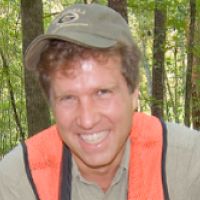Barcellos et al., 2017
Field measurements of soil iron and carbon cycling during spring warm-up in an aggrading pine forest at the Calhoun CZO
Barcellos, D, C Hodges, D Markewitz, E. Ardington, and A Thompson (2017)
Soil Science Society of America International Annual Meeting, Tampa, FL, 22-25 Oct. 2017
-
Calhoun, Luquillo, GRAD STUDENT
-
Calhoun, Shale Hills, GRAD STUDENT
-
Calhoun, INVESTIGATOR
-
Calhoun, Luquillo, INVESTIGATOR, COLLABORATOR
Abstract
Areas of fluctuating soil moisture are prone to shifts in soil redox potential, influencing the propensity for iron reduction, which in turn affects organic carbon accumulation, availability, and mineralization. Previous work from our research group quantified variations in soil wetness across a first-order watershed at the Calhoun CZO, in the Piedmont of South Carolina, with a history of land and water degradation due to agriculture practices. Based on this previous work, we aimed to study the impact of soil wetness and soil topographic variation on iron reduction and organic carbon dynamics in the winter and spring seasons. Erosion in the Piedmont has generated soils with contrasting profiles comprising soils with shallow clay-rich layers (at 10 cm) on the ridges and deep clay-rich layers (at 60 to 100 cm from the surface) in the footslopes. We collected soil samples every 10 to 15 days from January to May 2017, in two upland and two footslope locations, at 0-10 cm and 10-30 cm. Platinum electrodes and soil moisture sensors collected hourly data to corroborate our soil measurements. Our results suggest the differences in soil profile texture and landscape position strongly influenced Fe and C cycling. Upland soils contained higher carbon and short-range-order Fe than the footslope soils. Throughout the bi-weekly measurements the upland sites were also higher than the footslopes in ferrous iron [Fe(II)] and dissolved organic carbon (DOC). During the winter (dormant season), Fe(II), DOC, and CO2 fluxes remained near constant, but over the spring Fe(II) and CO2 increased and DOC decreased for all sites. Apparent changes in iron respiration and carbon mineralization at the study sites are potentially due to increases in microbial activity. Therefore, in this eroded environment, and perhaps many other forested watersheds, depth to clay can be a critical attribute driving carbon and iron dynamics in soils
Citation
Barcellos, D, C Hodges, D Markewitz, E. Ardington, and A Thompson (2017): Field measurements of soil iron and carbon cycling during spring warm-up in an aggrading pine forest at the Calhoun CZO. Soil Science Society of America International Annual Meeting, Tampa, FL, 22-25 Oct. 2017.
 This Paper/Book acknowledges NSF CZO grant support.
This Paper/Book acknowledges NSF CZO grant support.
Explore Further




